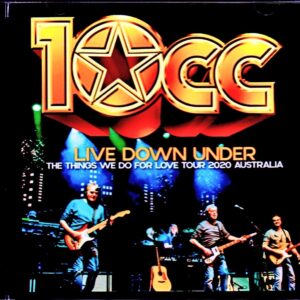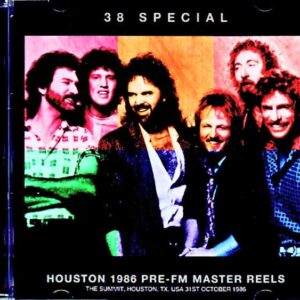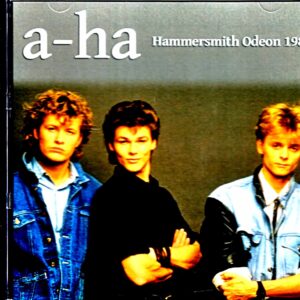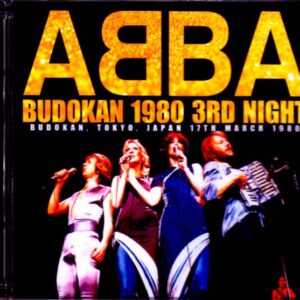Description
The 1972 winter European tour is one of the most fulfilling of Floyd’s live performances, but there was once a title called “BRUSSELS AFFAIR” that was highly praised by fans and specialist magazines as the definitive version. When it first appeared in May 2011, the excellent sound quality and the rarity of the recording including “Childhood’s End” made it a hot topic, and it sold out instantly. This week, this legendary masterpiece title will be revived with further sound quality improvements! This master tape was recorded using a UHER “Report Stereo” open reel deck and an AKG microphone, and the sound quality was originally very good. The old version of “BRUSSELS AFFAIR” mentioned above had its recording sound adjusted to improve the sound quality, but looking back now, it is true that there was a slightly artificial equalization feeling. This new work does not have that, and is characterized by its original natural sound that is close to the actual performance sound. The biggest change was the texture of the high notes, and the direction of the scattered vocals and the texture of the drums have been dramatically improved. The snare has been vividly restored to its original tone, and this alone should make the overall impression quite different. And above all, the sound of the cymbals, which sounded a little too loud on almost all tracks on the old version, has been pinpointed and restored to a moderate sound, which is also a very big topic. In other words, you can listen to this great performance with a more realistic sound that is much closer to the actual sound and sound on the day than the old version, and it is like a “natural sound quality version” of Brussels 72, which was sold out instantly due to its great popularity! For example, in “Speak To Me”, the vividness of the audience’s voices and the difference in the texture of the introductory performance are already clear immediately after pressing the play button, but this becomes certain with the first note of “Breathe”. The unnatural thickness of the sound pressure disappears from the rising tone, and the raw sound of the instruments rises with a strong core that they originally have. Due to the effect of this sound pressure reduction, the movement of the entire sound image, which was somewhat blurred on the old version, has regained clarity, and it is also noteworthy that the sound of each instrument can be tracked clearly from the beginning. In the characteristic scene (1 minute 00 seconds?) where the sequencer goes out of control and continues to emit a warning sound, the way the sound wraps around and the contours of the tone can be heard with more clarity and clarity than on the old version, and even after the singing part begins, you can hear the sound of the cymbals ringing in the background, which was diffused flatly throughout the sound image on the old version, but is pinpointed and modest in this work. In addition, in “On The Run”, you will be able to feel the clear sound and improved resolution even more. The key to this song is the way each instrument has a dynamic dialogue in a place dominated by silence, so by correcting the element that was weak in the old version (= the excessive metallic sound of the cymbals in the center that muddied the overall sound), the charm of the song itself comes straight to you. The difference in the sound image between the old and new versions of “Time” is also noticeable. For example, you will notice that the alarm bell and bell sounds at the beginning sounded slightly dull and rounded in the past, but now sound sharp and light in this version. The pitch has also been corrected more precisely, so you can also confirm that the pitch is slightly different from the old version (窶サ This version is slightly higher = more precisely adjusted). By the way, in the performance on this day, Rick mistakenly sang the lyrics that were supposed to be sung in the part just before the end of the song in the first part (around 2 minutes 18 seconds?), and the band was lured into “Breathe (Reprise)” by that, but it can be seen that they went into the guitar solo. The guitar, bass, and drums in this guitar solo part (around 2 minutes 50 seconds?) also spell out a natural sound expansion that was not experienced in the old version, and this also creates a wonderful contrast of tone combined with the transparent sound image. In “The Great Gig In The Sky”, the condensed feeling of the first half and the depiction of the space using the piano sound from the middle part are vividly revived with a restrained sound. The boosted sound of the old version was also attractive in this scene, but the original sound of the song intended by the band is probably closer to this work. Please pay attention to the spread and transparency of the sound of “Money”. The biggest difference is the development from around 2 minutes 59 seconds in the middle where the guitar starts to sing, and here in the old version, there were many scenes where the cymbals drowned out the melody sung by the guitar with their too strong sound. But in this work, that is completely gone, and the sound image has been reborn as one where Dave’s fingering can be followed firmly. The extension of the high-pitched crying sound of the guitar and the balance of the vocals and background sound after the song returns also jump out with a raw sound freed from the curse of equalization, so if you own the old version, I would like you to check out the difference in the sound image. In “Any Colour You Like”, Dave’s expressive scat tickles the ears with a freshness that is even more vivid than the old version, but another topic of this song is that the snare hits have regained the original sound of the instrument. Especially in the scene where the movement increases for more than a minute and a half in the second half (around 4:07 to 5:46), each sound has a clear feeling and natural tone, which is another part where this work’s superiority can be felt. In “Eclipse,” there is a momentary deterioration of the right channel (窶サHowever, sound is produced) that occurs around 1:18 to 1:22, but it remains in this work as in the old version, but since the sound is natural, it is not as noticeable as in the old version. On Disc-2, the bass sound that appears at the beginning of “One Of These Days” is no longer excessively loud, and the song moves while emitting the dull and heavy sound of the instrument itself. Some people may prefer the rough sound of the bass sound of the old version in this song, but at the same time, I think that there are quite a few people who play instruments who feel satisfied and comfortable with the straight bass sound. From around 3 minutes 20 seconds, the bass starts to move noticeably, but the lack of equalization makes the song’s mysterious swaying sound more vivid, and at the same time, you’ll notice that the transparency behind the bass has increased. You should also listen to the guitar’s strict, tense sound at the end of the song. The advantage of “Eugene” is that the sound transparency has increased significantly. This difference is very large because it is a song that emphasizes silence and sound, and the sound image is one that allows you to grasp the original aim of the song. As a characteristic of this period, a part like Roger’s poetry reading is developed before the scream, but the sound of the murmured and whispered words is clearer than the old version, and the way the song moves after the screaming is played with a bold sound and explosive tension, so you should be able to enjoy the deep afterglow after the end of the song. First of all, please pay attention to the glossy and clear sound image of the vocal line at the beginning of the song “笙ェOverhead the albatross…”. The subtle clarity of the duet is also outstanding. In the old version, the vocals, including this opening part, were slightly affected by equalization, and were recorded with a thin veiled sound, but this time it has been eliminated. The sound movement just before the development section that starts at around 7 minutes 32 seconds was also disturbed by the powerful cymbal hits on the old version, but this work realizes a surprisingly easy-to-listen-to high-resolution sound, and you will be amazed at the difference here. Another point to note is that the sound of the snare, which goes wild everywhere before the final song, has been greatly improved, and it sounds like the original sound of the instrument. And the rare song “Childhood’s End”, which premiered at the French concert on December 1st and was only played a few times between the concert in Zurich on the 9th, has been revived with an even fresher sound this time. The biggest difference is in the sound of the guitar, especially the guitar solo starting around 6 minutes 52 seconds in the second half. In the old version, the metallic guitar sound, like the cymbals, was ringing out loudly in the center of the sound image, but by correcting this, it is noteworthy that the original “expressive crying tone” of the guitar has been restored in this work. Similarly, the excessive sound of the cymbal shot after the solo has been revived with a fresh tone, and you can see that the excessive high notes of both have been greatly improved. If you ask what the meaning is of re-releasing a title that originally had excellent sound quality this time, it is simply because we wanted to deliver to the fans the charming performance sound that Floyd wrote on this day more accurately. In fact, if you increase the sound pressure and make the sound stronger, it will be easier to understand because it will have more definition, and in some cases, listeners will perceive such a sound as “good sound.” This is not only the case with bootlegs, but also with recent official remasters. However, the greater the gap between the created sound image and the sound recorded on the master, the more the music will be delivered in an easy-to-understand sound, but the original correct tone will not be conveyed. If the sound of the master is too bad, remastering work is necessary to make it easier to understand, but if you do it excessively, the essence of the sound may be lost. Of course, when the old album “BRUSSELS AFFAIR (Sigma 66)” was released, no work was done to distort the essence (窶サ All the pitches that were nearly a semitone lower, mainly in the latter half of the show, were accurately corrected, and the noise confirmed in several places was carefully removed), but it is also true that the title was moderately equalized to “make the performance sound easier to understand.” However, what we aimed for in this work was the latest remastering to “more accurately convey” the performance of that day. That is, the main focus was to carefully review the performance sound, avoid the creation by equalization, and try the best sound image correction and strict pitch correction to strongly bring out the charm that the performance of that day has. However, such work of improving sound quality and sound image is not limited to this work, but the same can be said for other titles. The reason why we particularly emphasized this in this work is that the band Floyd was a rare group that pursued the possibilities of music by borrowing the characteristics of the sound. In other words, in the case of Floyd, unlike normal rock sounds, the aim is to place emphasis on the work of examining the original sound and reexamining the essence of the sound itself rather than trying to get the result by boosting the entire original sound recorded. This is because we believe that this will bring out the characteristics of Floyd’s songs and the charm of the performance to the maximum. The reason I’ve written so much about the difference in sound quality between the old and new versions is because I wanted to tell you how much difference there is in the appeal of the sound that is the basis of Floyd’s songs and performances between the old and new titles, and if you listen to this album, you will be convinced that this attempt was a great success. Live at Forest National, Brussels, Belgium 5th December 1972 TRULY PERFECT SOUND (UPGRADE) Disc 1 (47:29) The Dark Side Of The Moon 1. Speak To Me 2. Breathe 3. On The Run 4. Time 5. Breathe (Reprise) 6. The Great Gig In The Sky 7. Money 8. Us And Them 9. Any Colour You Like 10. Brain Damage 11. Eclipse Disc 2 (50:34) 1. One Of These Days 2. Careful With That Ax, Eugene 3. Echoes 4. Childhood’s End






Reviews
There are no reviews yet.